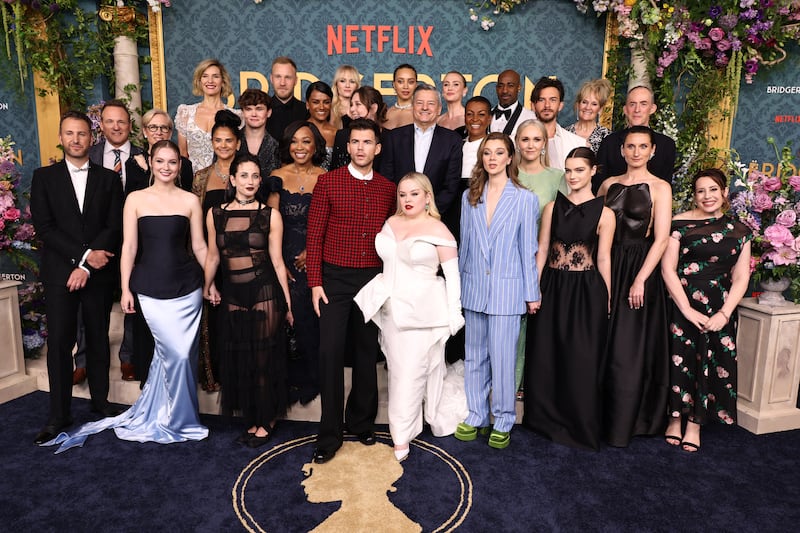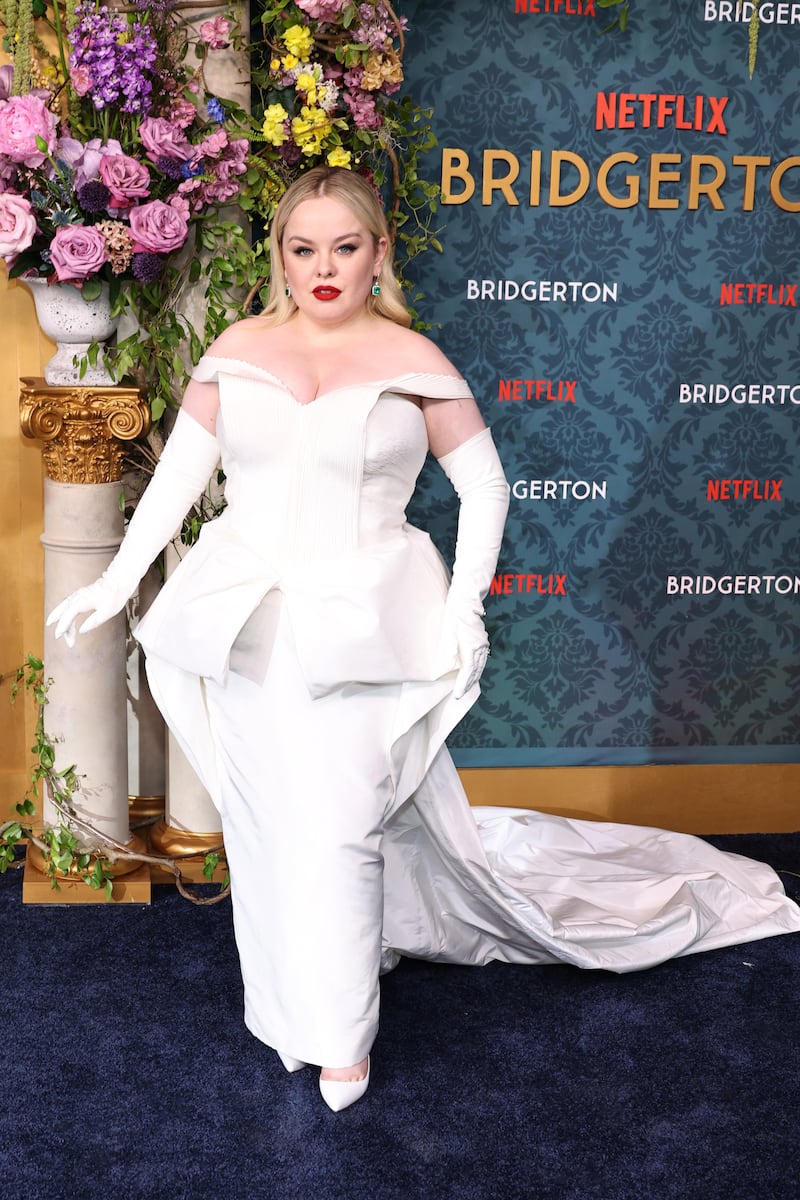Bridgerton creator Shonda Rhimes has described series three (Netflix from Thursday) of her frocks ‘n frolics epic as “a beautiful tribute to the wallflowers of the world”. The wallflower in question is Lady Penelope, the court gossip played with wit, charm and self-awareness by Galway actor Nicola Coughlan.
In previous seasons, Coughlan’s character was the Little Miss Nasty behind a sugar and spice exterior. She was the mysterious Lady Whistledown, poison-penned author of a pamphlet that laid bare the various scandalous goings-on at court in early 1800s Regency London.
Whistledown was an odd creation. Julie Andrews voiced her scribblings while Coughlan portrayed her alter-ego. There was always a disconnect – you never believed Lady Penelope possessed the cruel inner voice we heard in Whistledown’s journal.
This was largely because of the charisma Coughlan brought. She was too nice to seem nasty. Now, she finally receives her moment in the spotlight – what is apparently referred to as the Bridgerton “glow-up”.
READ MORE
In practice, this means a nicer wardrobe and leading lady make-up (in a recent Irish Times interview, Coughlan talked about “the oddball in the corner” becoming the centre of attention) She’s good value for the promotion to central protagonist and, honestly, by far the best thing in Bridgerton, which does not always seem to be in on the joke of its own absurdity.
A Regency romp could be nothing without a romance and this year the will they/won’t they dynamic is between Lady Penelope and her platonic pal Colin Bridgerton (Luke Newton) – a bit of a nerd, like Penelope.
Does anyone watch Bridgerton for the plot, though? Yes, there is a storyline, but it feels peripheral. The show triumphs because it is an aesthetic delight – the way a cupcake is more fun to gawp at than to actually snaffle.

There is plenty to luxuriate in across the first four instalments of series three (which Netflix has divided in two). Episode one kicks off with a lawn party that goes on longer than the wedding at the start of The Godfather, albeit with fewer allusions to retributory violence.
Here and elsewhere, the dialogue has the bouncy quality of Downton Abbey – to which Bridgerton bears a superficial similarity – without the classicism. It’s as frothy as a Frappucino and contains the same sugar content. Too much in one go will probably leave you unfeeling unwell. In modest portions, however, Bridgerton goes down just fine and serves as a fine showcase for Coughlan.
















